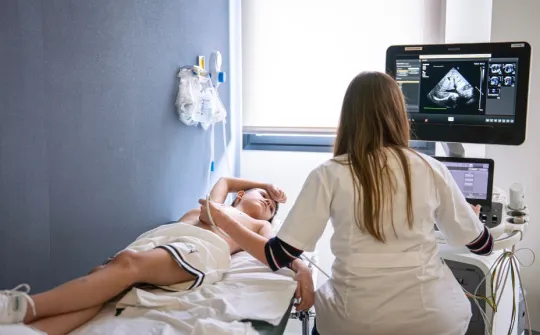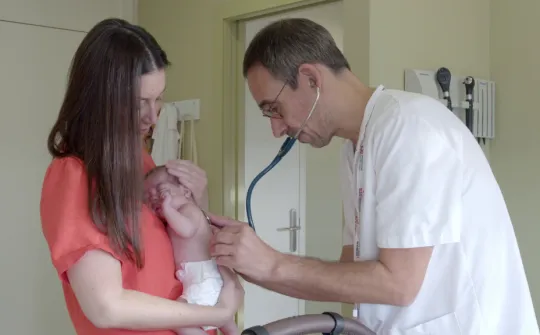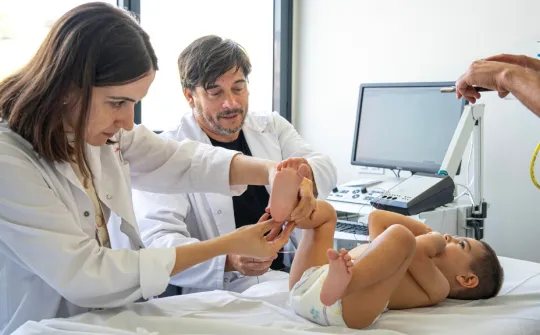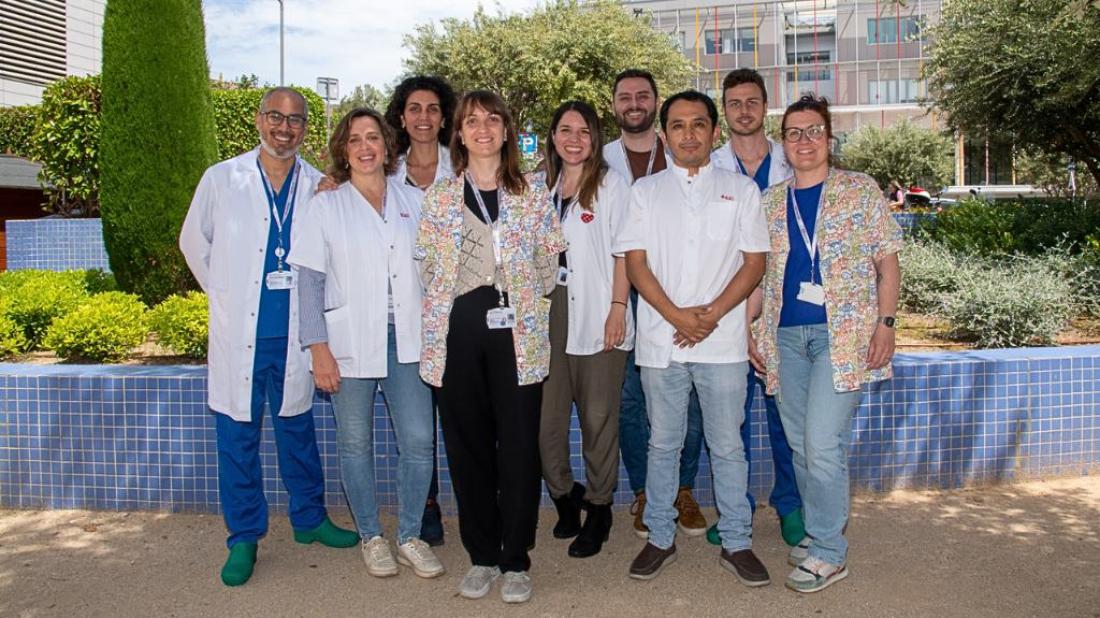
Thanks to years of effort, today, the eRITME programme allows for monitoring of the symptoms of severe diseases.
In 2012, the SJD Barcelona Children's Hospital led the implementation of a remote cardiac monitoring programme for pediatric patients suffering from laminopathies, which are rare diseases that carry increased risk of severe arrythmia. The concept of remote cardiac monitoring evolved over time, and today, the eRITME programme allows for the monitoring of several sudden arrhythmic death syndromes across the globe.
Technological progress in recent years has allowed us to overcome hurdles which, until not very long ago, were considered insurmountable. One area in which progress has been, without a doubt, the most significant, is to do with remote distance monitoring.
Smaller equipment and better wireless connections have allowed telemedicine to expand into new territories, bringing modern solutions that make the traditional hospital concept more fluid and malleable. Communication with patients is made easier thanks to new technology, making healthcare more accessible and long-distance medicine a real possibility.
In line with this philosophy, in 2012, the Arrhythmia Unit at the SJD Barcelona Children's Hospital, alongside the Fundación Andrés Marcio - Niños contra la Laminopatía [Andrés Marcio Foundation - Children against Laminopathies], started a pioneering programme to monitor patients all over the world diagnosed with a laminopathy—a rare, congenital, neurodegenerative disease that affects muscle tissue, including the heart. The fantastic results that were obtained led to them expanding their operations.
Today, the eRITME programme remotely monitors 500 patients from around the world with various different sudden arrhythmic death syndromes. These include: Long QT syndrome; Brugada syndrome; myocardiopathies; TANGO2 and other metabolic diseases; and also laminopathies and other neuromuscular diseases.
“The main challenge we have had to tackle is the lack of equipment designed for pediatric patients. We have had to be creative and adapt our current equipment that is made for adults. Now, thanks to our use of these tools outside of usual indications, there is a solid body of evidence for their use in this area”, explains Dr Georgia Sarquella-Brugada, Head of the Arrhythmia, Family Cardiopathy and Sudden Death Unit at the SJD Barcelona Children's Hospital.
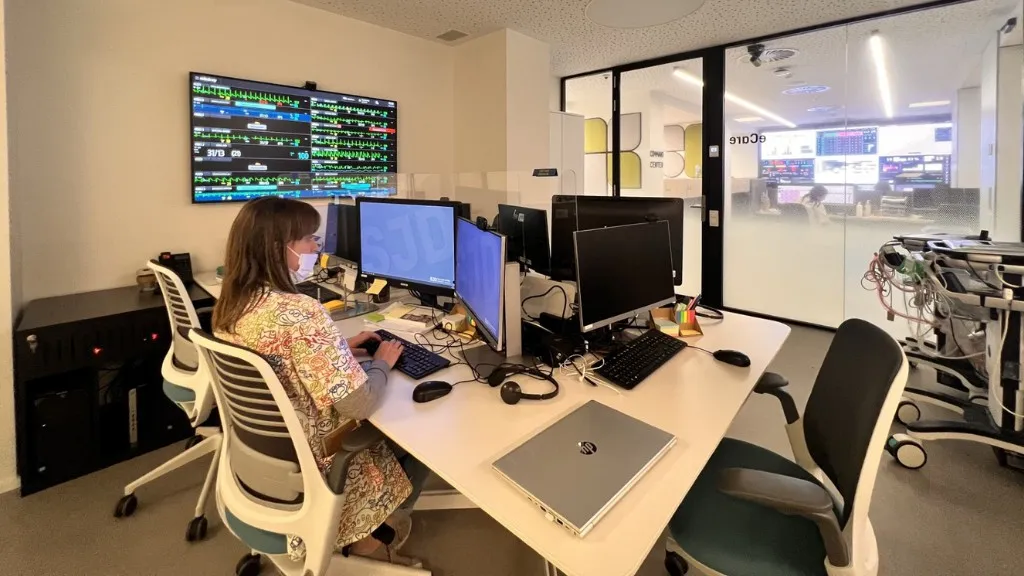
CORTEX and ENIGMA data centralisation tools
With the non-stop reduction in equipment size, alongside improved-connectivity tools, the amount of data we collect has increased exponentially. We have gone from having almost no data to having such a vast quantity that it presents a challenge in and of itself: from how to best make use of data, to how to appropriately and precisely filter them.
During this rapid growth, the SJD Barcelona Children's Hospital developed CORTEX, a structure that manages data collection. Keeping in mind that our patients come from all over the world, the ENIGMA platform is being tweaked and adapted to centralise all of the data collected from different monitoring equipment. This will allow us to perform 24/7 monitoring, ensuring that the entire Arrhythmia team can detect any patient deterioration as early as possible.
“By doing this, patients do not need to travel to the hospital as often, as in some cases, this can be very complicated and even require air travel. It also allows us to perform remote distance check-ups of treatments and see whether changes are working without the patient needing to travel”, adds Dr Sarquella-Brugada.
She goes on to explain that all of this progress has an extremely positive impact on pediatric patients, as they are saved the stress of having to leave their home, while also avoiding them missing school or parents having to miss work. All of this links into the idea of improving the sustainability of the healthcare system by avoiding unnecessary journeys.
Proof of benefits
During this time, we have also been able to collect valuable data that underline the benefits of remote distance cardiac monitoring of pediatric patients. We have managed to reduce hospital visits by up to 45%, in addition to earlier detection of incidents, allowing for speedier decision-making. “At the end of the day, this all helps to reduce mortality rates, too”, notes Dr Sarquella-Brugada.
The aim of these efforts is to further explore remote distance monitoring, and as such, it is vital that we develop new artificial intelligence algorithms to help manage collected data.
“Once again, we are faced with the issue of our current algorithms being designed for adult patients. Now we have to adapt them to our younger patients”, explains the doctor, who also recognises the need to use collected data for new scientific literature, allowing this knowledge to be used all over the world.
“Essentially, these tools allow us to closely monitor our patients regardless of distance, and take positive steps forward with their disease. It all boils down to putting our patients at the front and centre of their care and customising their treatment. This form of monitoring will provide valuable insight into helping us do just that, letting us finally overcome the age-old problem of lack of consistent monitoring”, she notes.
